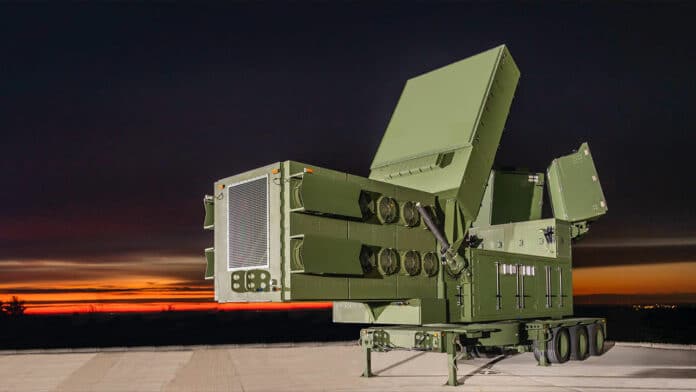Raytheon, an RTX business, completed a live-fire engagement using the advanced, 360-degree Lower Tier Air and Missile Defense Sensor (LTAMDS). This milestone is the latest event in a series of ongoing development tests for the radar, which will culminate with an operational capability level by the end of the year.
LTAMDS is the next-generation air and missile defense radar developed for the U.S. Army. It is a 360-degree, Active Electronically Scanned Array radar that is powered by Raytheon-manufactured Gallium Nitride. LTAMDS offers significantly more performance against a wide range of threats, including manned and unmanned aircraft, cruise missiles, ballistic missiles, and hypersonics.
LTAMDS has three antenna arrays – a primary array on the front and two secondary arrays on the back. They work together, detecting and engaging multiple threats from any direction at the same time. It is designed to defeat advanced and next-generation threats, including hypersonic weapons or those that fly faster than a mile a second.
The test consisted of a cruise missile surrogate flying a representative threat trajectory. In the test, LTAMDS detected and tracked a threat-representative cruise missile target, transmitted track data to the Northrop Grumman-built Integrated Battle Command System for launch command, and guided a PAC-3 missile to intercept the target.
“When the LTAMDS contract was awarded four years ago, this was what we told the Army we would deliver: the world’s most advanced and highly capable air and missile defense radar,” said Tom Laliberty, president of Land and Air Defense Systems at Raytheon. “Seeing LTAMDS come to life is not only gratifying to the scores of experts who designed and developed it, but it reaffirms the commitment we made to deliver this exceptional radar to air defenders around the globe. We’re now closer than ever to doing just that.”
All six radars that were part of the October 2019 contract have completed production and are currently undergoing simultaneous testing at different government and Raytheon test sites. Integration and test activities are being conducted in parallel. Following the completion of the Contractor Verification Test, events will continue throughout 2023.
Rigorous testing will take place in 2024, which will include environmental and mobility qualification and an expanded system of system testing, leading up to full operational capability in the calendar year.
